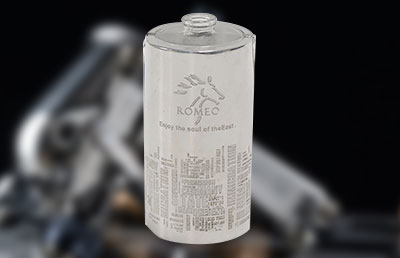How metal etching works and its key characteristics
2023-11-08
Metal etching, also known as chemical etching or chemical milling, is a subtractive manufacturing process used to selectively remove material from the surface of a metal workpiece to create intricate designs, patterns, or markings. This process is commonly employed in various industries for purposes like engraving, marking, decoration, and manufacturing of precision parts. Here's how metal etching works and its key characteristics:
How Metal Etching Works:
1. Preparation: The process begins with a clean metal workpiece made of materials like stainless steel, brass, copper, aluminum, or various alloys. The surface of the metal is thoroughly cleaned to ensure proper adhesion of the etching resist material.
2. Etching Resist Application: An etching resist (or mask) is applied to the metal surface. The resist is a chemical or material that protects the areas where the metal will not be etched away. Common etching resists include waxes, photoresists, or custom-designed masks.
3. Exposure and Development: In some cases, a pattern or design is transferred onto the resist through techniques like photolithography. The exposed resist is then developed or removed, leaving only the protected areas.
4. Etching Process: The metal workpiece, covered with the resist, is immersed in an etching solution or bath. The etchant chemical reacts with the exposed metal, dissolving it selectively. The etching process continues until the desired depth or pattern is achieved.
5. Rinsing and Cleaning: After etching, the workpiece is thoroughly rinsed to remove the etchant and any remaining resist material.
6. Finishing: The etched metal surface may undergo additional treatments like polishing, plating, or coating to achieve the desired appearance and properties.
Key Characteristics of Metal Etching:
1. High Precision: Metal etching allows for the creation of highly precise and intricate designs, patterns, and markings with fine detail.
2. Customization: It is a versatile process that can be tailored to produce unique and customized metal parts or products.
3. Wide Material Compatibility: Metal etching can be applied to various metals, including stainless steel, aluminum, brass, and more.
4. Cost-Effective: It is often a cost-effective alternative to other precision machining methods for producing intricate metal parts.
5. Batch Production: Metal etching is suitable for both prototyping and large-scale production, making it useful in industries like electronics, aerospace, automotive, and more.
6. Repeatability: The process offers excellent repeatability, ensuring consistent results from one part to another.
7. Complex Geometries: It is well-suited for creating parts with complex geometries and internal features that may be difficult or costly to achieve with other manufacturing methods.
Metal etching is widely used in various applications, including electronic components, nameplates, circuit boards, decorative art pieces, jewelry, medical devices, and precision components for the aerospace and automotive industries. The versatility and precision of metal etching make it a valuable tool for both functional and decorative purposes.



